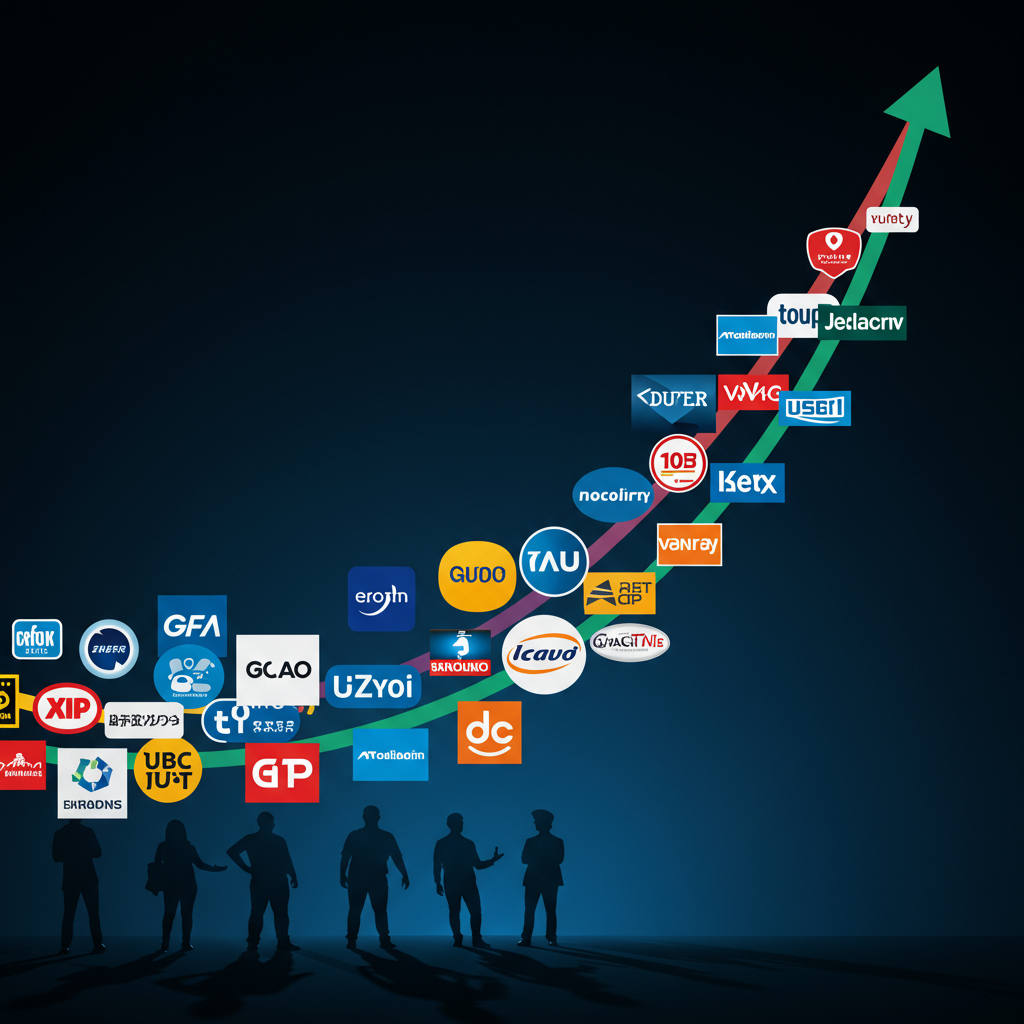Investing in the technology sector has often felt synonymous with betting on a select few giants – the “Magnificent Seven.” For a significant period, these dominant large-cap stocks largely dictated the narrative and performance of the broader tech market rally. However, recent market dynamics suggest a crucial shift is underway. The current surge in tech stocks is demonstrating a much wider reach, indicating that opportunities and leadership are expanding far beyond these established leaders. Understanding this broadening trend is essential for investors seeking to navigate the evolving landscape and potentially uncover areas poised for future growth.
The Shifting Gears of the Tech Market
For years, names like Nvidia, Apple, Microsoft, Amazon, Alphabet, Meta Platforms, and Tesla dominated headlines and portfolios. Their immense size and growth, particularly fueled by excitement around artificial intelligence (AI), created a concentrated rally. Nvidia, in particular, saw unprecedented growth, with shares skyrocketing over 1,400% in the past five years alone, transforming from a large company into a market capitalization titan exceeding $3.4 trillion. This initial phase was heavily centered on the promise of AI infrastructure, with Nvidia’s GPUs becoming foundational hardware.
While these giants remain crucial market players, the picture is changing. A key expectation among many market strategists for the year was that the powerful AI investment theme would inevitably broaden its impact. This meant moving beyond the select group of companies most directly associated with AI’s initial build-out. Data now confirms this expansion is actively happening, particularly since the market reached a notable low point on April 8th.
Growth Surging Beyond the Usual Suspects
Since early April, the tech rally’s energy has visibly spread into different corners of the market. While some Magnificent Seven stocks, including Nvidia, have continued to perform well (Nvidia saw gains of over 60% in this recent period), a range of companies outside this elite group have seen even more dramatic increases. This indicates that the market is rewarding a wider array of businesses contributing to or benefiting from the AI revolution.
Specifically, companies involved in AI chip manufacturing and data center infrastructure, but often not classified within the core Magnificent Seven, have posted impressive returns. Stocks like Broadcom (AVGO), AMD (AMD), and Dell (DELL) have experienced gains of roughly 70% or even more since the April bottom. These figures highlight significant investor confidence in the expanding need for hardware and services that power AI applications, moving beyond Nvidia’s singular dominance in certain chip types.
New Fronts in the AI Investment Wave
The AI theme isn’t confined to just chipmakers. Its ripple effects are creating substantial growth in related sectors. For instance, the energy companies supporting the massive power demands of new data centers have seen remarkable stock performance. Vistra Corp (VST) and NRG Energy (NRG), involved in the AI energy sector, have both seen their stock values climb by more than 80% in the recent rally period. This underscores that the infrastructure build-out for AI is incredibly broad, touching industries far beyond traditional tech.
Cloud computing, a core component of AI deployment, is another area seeing significant acceleration. Oracle (ORCL), a major player in enterprise software and cloud services, has also benefited substantially. The stock is up over 70% and recently achieved an all-time high. This demonstrates that companies providing the platforms and services necessary to run AI models are attracting significant investment, supplementing the focus on the underlying hardware.
Why Breadth Signals a Healthy Bull Market
The fact that market leadership is broadening is a positive sign for the sustainability of the overall trend. Historical market analysis shows that durable bull markets are fundamentally driven by powerful, underlying economic or technological themes, rather than being solely reliant on the performance of a small number of individual stocks.
Consider past eras: The bull market of the 1920s wasn’t just about a few companies; it was defined by themes like radio communications and the burgeoning automobile industry. The late 1990s dot-com boom was centered on the internet theme itself. Even prominent stocks from that period, like Cisco (CSCO), which was a major leader, didn’t remain the absolute best performers throughout the entire cycle, illustrating that while the theme persists, the specific stocks driving returns can evolve.
Julian Emanuel, head of equity, derivatives, and quantitative strategy at Evercore ISI, accurately captures this dynamic. He describes the current environment as an “AI and tech bull market,” emphatically stating it is “not the ‘Magnificent Seven’ bull market.” This perspective suggests that the foundation of the current rally is the widespread adoption and development of AI technology, a theme large enough to support growth across numerous companies.
AI’s Deepening Impact Across Diverse Companies
The influence of AI is prompting strategic shifts even within the M7 companies themselves, further contributing to the broadening trend in different ways. Amazon (AMZN), while an M7 stock, had recently lagged some peers since its peak. However, the company is making massive investments specifically leveraged to the AI revolution. CEO Andy Jassy has highlighted AI as transformative.
Amazon is not only enhancing its core e-commerce efficiency using AI but is also making significant plays in new AI-related infrastructure. This includes developing its own custom AI chips, such as the Trainium processor. By building proprietary silicon, Amazon Web Services (AWS) aims to offer more cost-effective AI solutions to customers, competing with external chipmakers and contributing to the diverse hardware ecosystem powering AI. This vertical integration strategy, rooted in their 2015 acquisition of Annapurna Labs, shows how major players are investing heavily in the foundational AI layer, regardless of whether they are primarily known as chip companies. Their upcoming Trainium 3 chip promises substantial performance gains.
Furthermore, Amazon’s ambitious Project Kuiper, its satellite internet venture, is nearing commercial launch. While not purely an AI play, large-scale data networks like Kuiper are critical for the global reach and deployment of AI-powered services, potentially becoming a significant new revenue stream that benefits from the overall tech and AI build-out. This exemplifies how the AI theme encourages investment in related infrastructure.
The increased competition in the AI chip space, with companies like AMD and Intel developing alternatives and large hyperscalers like Amazon designing their own, naturally distributes the investment and growth opportunities across a wider set of players. This competition helps drive innovation and ensures the benefits of the AI spending cycle aren’t confined to a single entity.
Outlook: Factors Supporting Continued Rally Breadth
The broadening participation in the tech rally supports the argument that it has potential for further expansion. According to Julian Emanuel, typical signals that mark the end of a bull market appear to be absent. These include indicators like an impending recession, aggressive interest rate hikes by the Federal Reserve, sharply spiking bond yields, and excessively extreme valuations across the entire market, not just in a few leading names.
The continued, substantial investment required to build the necessary AI infrastructure—including data centers, power grids, specialized chips, and advanced software platforms—provides a fundamental tailwind for a wide range of companies. As AI capabilities become more widespread and integrated into various business processes and consumer applications, the demand for this underlying infrastructure is expected to remain robust, fueling growth beyond the initial group of AI leaders.
Navigating this environment requires investors to look past the most obvious names and understand which companies are positioned to benefit from the broader build-out and adoption of AI technology across different sectors. The market is signaling that the opportunity set has expanded, rewarding those who identify the diverse contributors to this powerful thematic shift.
Frequently Asked Questions
What does it mean that the tech rally is “broadening”?
A “broadening” tech rally means that stock price increases are not limited to a small group of dominant technology companies, like the “Magnificent Seven.” Instead, a wider variety of companies across different sectors, particularly those involved in building AI infrastructure, providing related services, or utilizing AI in new ways, are seeing significant stock gains. This indicates a healthier market trend where the underlying theme (AI) is benefiting many participants.
Which specific companies outside the Magnificent Seven are benefiting from the AI rally?
Recent performance highlights companies involved in critical AI components and infrastructure beyond the M7. Examples mentioned include AI chip and data center related firms like Broadcom (AVGO), AMD (AMD), and Dell (DELL). Companies in the AI energy sector, such as Vistra Corp (VST) and NRG Energy (NRG), which power data centers, are also seeing strong gains. Additionally, cloud service providers like Oracle (ORCL) are benefiting as AI deployment relies heavily on cloud infrastructure.
Is the current tech rally expected to continue, according to experts?
Some market strategists, such as Julian Emanuel at Evercore ISI, believe the current AI and tech bull market has “further to run.” This perspective is based on the observation that typical indicators signaling the end of a bull market – like an imminent recession, Federal Reserve interest rate hikes, surging bond yields, or widespread extreme stock valuations – are currently not present. The ongoing fundamental investment in AI infrastructure is seen as a continued driver.
Conclusion
The narrative that the tech rally is solely dependent on the performance of the Magnificent Seven is increasingly outdated. Evidence clearly shows that the AI theme, the true engine behind much of the recent market strength, is driving significant value creation across a broader range of companies. From chip designers and data center operators to energy providers and cloud platforms, opportunities are expanding. This broadening suggests a more mature phase of the AI bull market, requiring investors to look beyond the familiar names to find potential outperformance. While the path forward will undoubtedly involve market fluctuations, the fundamental investments being made in AI infrastructure and adoption point towards continued dynamism in the tech sector, extending well past its most famous constituents.
Word Count Check: 1020


